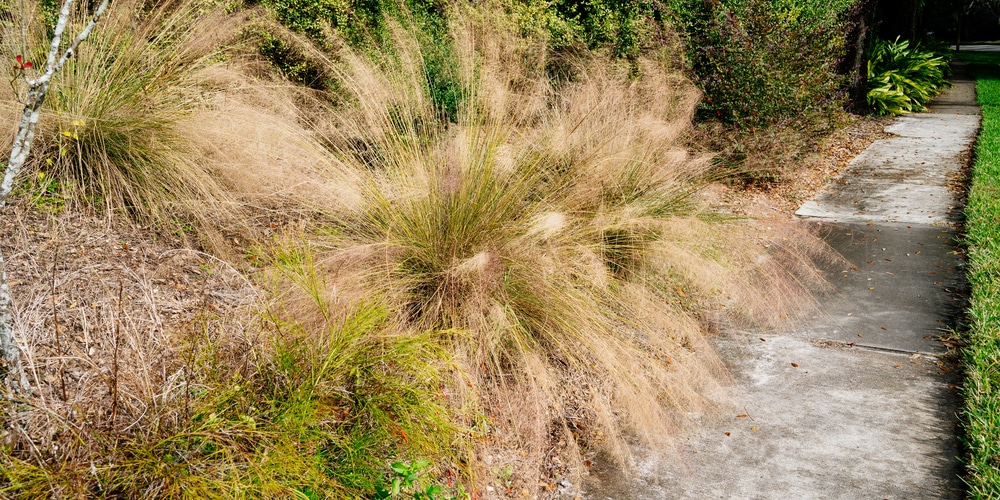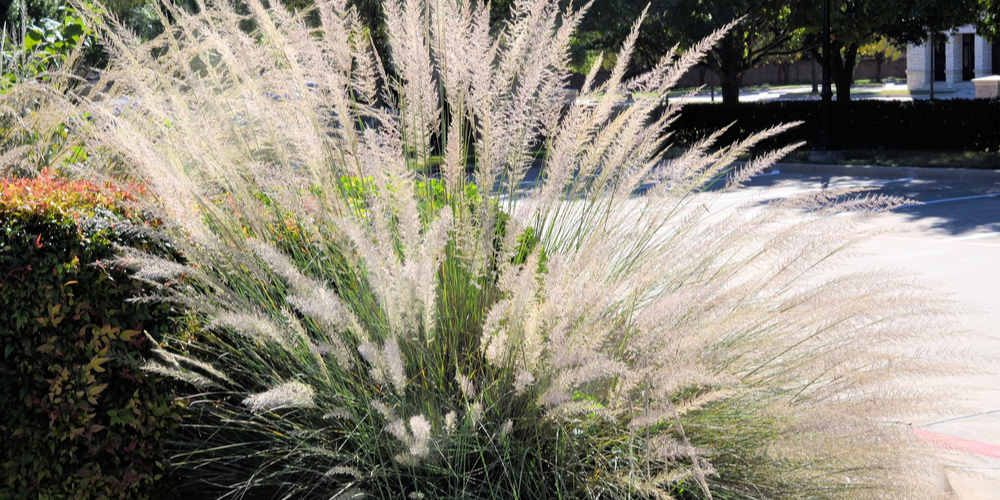White muhly grass, also known as “White cloud” with the botanical name of Muhlenbergia lindheimeri is an ethereal yet tough, and low-maintenance ornamental grass. It is famous for its willowy leaves that are light green in color and turn into stunning shades of orange, red, and purple in the fall.

| Botanical Name |
Muhlenbergia lindheimeri |
| Common Name | White muhly grass |
| Plant Type | Perennial |
| Flower Color | Pink, Orange, Purple, Red |
| Size When Mature | 30 – 60 inches |
| Bloom Time | Late Summer to early fall |
| Sun Requirements | 6-8 hours Full Sun tolerates Partial Shade |
| USDA Hardiness Zones | Zones 4 to 9 |
| Soil PH Range | 5.5 to 7.0 |
| Soil Type |
Acidic, Neutral, and Alkaline. Prefers sandy and well-draining soil but can tolerate clay. |
| Water Needs | Low to Medium |
| Native Area | North America |
It is easy to grow and maintain, making it perfect for adding texture and highlight to any garden, landscape, and field. If you are thinking of adding this beauty to your landscape, here is everything you need to know about white muhly grass care.
What You Need to Know About White Muhly Grass
White muhly is a perennial grass native to North America. It is tolerant of a wide range of conditions and requires little care once it is established.
When grown in ideal conditions, white muhly grass can reach up to 3 feet tall and 4 feet wide, making it one of the most popular choices for use as a groundcover. It also makes an excellent border plant or accent plant.
Even though considered one of the most elegant-looking, fine-textured grasses, white muhly is deceptively tough. It is tolerant of heat, drought, and poor soil conditions and will even thrive in clay soils.
It is a fast-growing grass that quickly fills in any empty spaces in your garden. Once established, it is virtually maintenance-free. The only care white muly grass requires an annual trimming in late winter or early spring.
How to Care for White Muhly Grass
If you plan to add this long-term ornamental grass to your garden, here’s everything you need to know to make sure your white mule grass stays healthy and looks its best.
Light
White mule grass thrives in full sun but can also tolerate partial shade. It requires at least six hours of direct sunlight per day to prevent the leaves from turning yellow. If you live in an area with hot summers, it’s best to plant white mule grass in an area that receives afternoon shade to maintain its vibrant green color.
Water And Soil Needs
While known as drought-tolerant, it is best to water it regularly during the first growing season to help its roots establish. Once established, it doesn’t need much water and can even tolerate periods of drought.
White mule grass grows best in sandy or gravelly soils that drain well. It’s also tolerant of most other soil types as long as the drainage is good as it will not tolerate wet or soggy soils. If your soil tends to hold water, it’s best to plant white mule grass in a raised bed or on a slope.
It’s not particular about pH level but thrives best in slightly acidic to neutral soils with a pH of 6.0 to 7.0.
Temperature Requirements
White mule grass is pretty much heat and cold tolerant and showcases different beauty in different seasons. In spring and summer, the leaves are a deep green color. In fall, the leaves take on a beautiful bronze hue before turning brown in winter.
It is hardy in USDA zones 4-9, making it a good choice for both hot summer climates and colder winter areas. Indeed, an excellent choice for an all-year-round aesthetic in the garden!
Fertilizer
Fertilizing is not necessary for this independent grass unless growing in poor soil. If you need to fertilize, use a low-nitrogen fertilizer in early spring before new growth begins. Be careful not to over-fertilize as this can cause the leaves to turn yellow.
Common Diseases
White mule grass is a tough plant and is relatively resistant to diseases and pests. The most common problem is fungal leaf spots, which can cause brown or yellow spots on the leaves. This is usually not serious and can be treated with a fungicide.
Propagation
This plant is easily propagated by division in early spring or fall. To divide, simply dig up the plant and carefully separate the root ball into smaller pieces. Each piece should have at least one shoot. Replant the divisions immediately in prepared soil and water well.
White Muhly Grass Care: Final Thoughts
White muhly grass is an excellent choice for low-maintenance yet stunning ornamental grass, especially for big gardens and landscapes.
With its beautiful green leaves in spring and summer and mesmerizing bronze hue in fall, it will surely give a dramatic and picturesque vibe all year round!
Related Article: Dog Safe Ornamental Grasses
